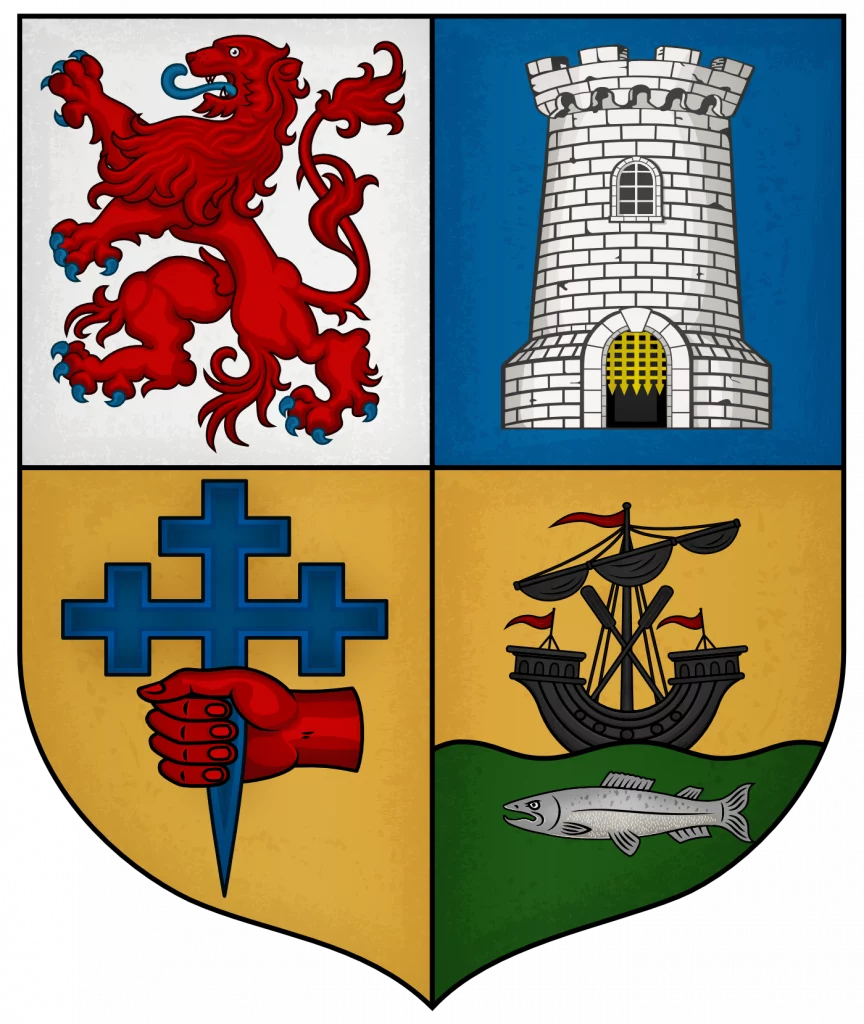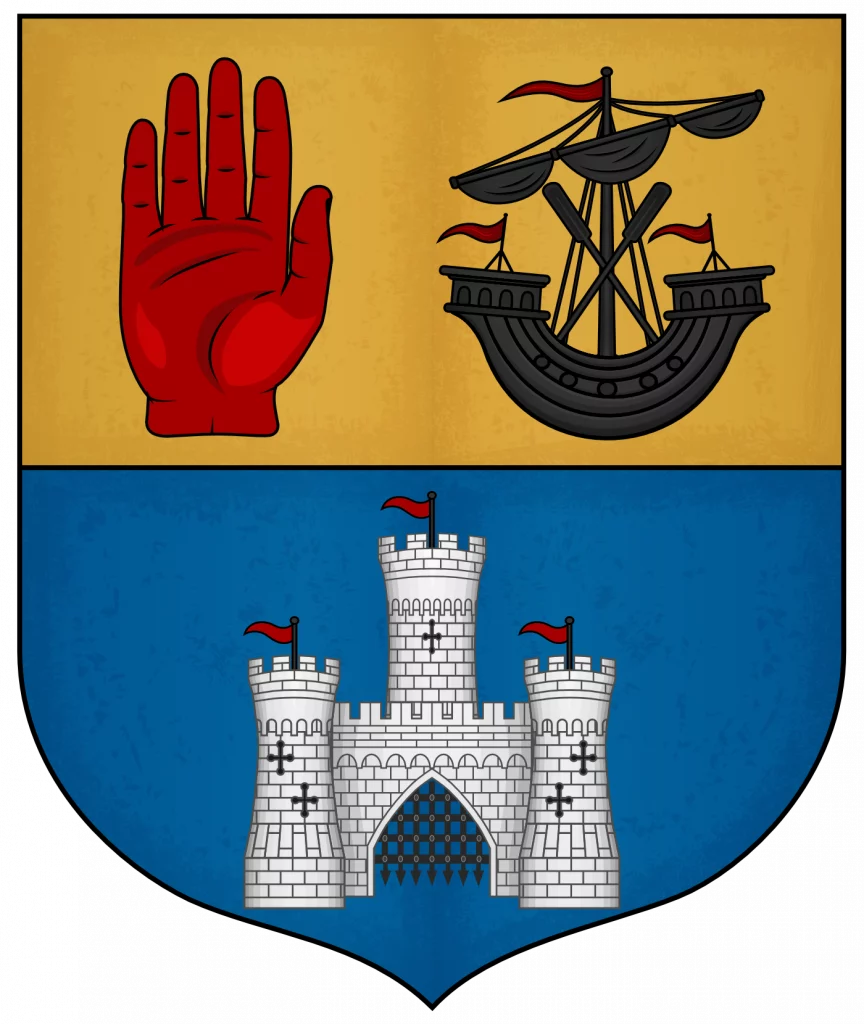The House of Lochbouie is a feudally independent Branch Clan established at the time as the House of Duart. The branch takes its name from the beautiful Loch Buie on the Island of Mull, where Moy Castle overlooks the bay opening onto the Firth of Lorn and the tidal islands of Eilean Mòr and Eilean Uamh Ghuaidhre.
History
The branch was likely established in 13451 when John Dubh sent his sons, Lachlan Lùbanach and Hector Reaganach, to negotiate with John of Islay, 1st Lord of the Isles, for land on the Isle of Mull.

The negotiation failed and the brothers abducted John of Islay. To their surprise, after his release John rewarded them for their boldness, which he wished to leverage, and granted each lands on Mull.
John of Islay granted each brother lands on Mull.2 Hector Reaganach was given four score merks of land3 that had been occupied by the MacFadyens. As the legend would have it Hector Reaganach asked the MacFayden Chief for a suitable place to build a sheepfold, but instead build a castle from which he drove the MacFaydens from Lochbuie. The MacFaydens resettled in Garmony where their chief built a reputation for mining and coining gold; his descendants became renown goldsmiths.1
By accepting the lands from john of Islay, the brothers not only established the first two houses of the Clan Maclean (Duart and Lochbuie), but they also as heads of these houses became vassals to the Lord of the Isles. Their father and chief, John Dubh, was alive when the houses were established; upon his death, the chiefly line fell to Lachlan Lùbanach and House of Duart. While the House of Lochbuie meets the definition of a cadet—an independent branch not inheriting the chiefship—any practical effect of this technicality was superseded well before John Dubh’s death by the fact that Hector Reaganach held his charters directly from the Lord of the Isles making the House of Lochbuie independent.10 Thus, the House of Lochbuie was an independent Branch Clan before it ever could have been considered a cadet of Duart. Though no records or histories record a Lochbuie Chief swearing fealty to that of Duart, it is clear that the houses generally worked together to amass and consolidate considerable power for the Macleans within Western Island and Highlands until the end of the Lordship of the Isles in 1493.8
Hector Reaganach married twice. The betrothal to his first wife Cristíona MacLeóid was arranged by John of Islay to one of his powerful vassals, Chief of the MacLeods of Lewis.1 For this match to be successful, Hector Reaganach would have already established his estate. Hector Reaganach’s second marriage was to Mór, daughter of Gofraidh Ó Balbháin of Clan Ferguson.1
The House of Lochbuie remained loyal to the Lordship of the Isles, and Hector’s descendants served on the Council of the Isles until it was forfeit James IV of Scotland in 1493.8 Murdoch Maclean (6th of Lochbuie) was granted charter to the Free Barony of Lochbuie by James V, King of Scotland, on June 29, 1542. This aligned the House of Lochbuie to the Stewart Kings to whom they remained loyal until the Jacobite Uprising of 1715.
Under Hector’s (12th of Lochbuie) leadership, Lochbuie men delivered the first victory of the Jacobite Uprising of 1689 at the Battle of Knockbrecht, overcoming five troops of horse sent by Hugh Mackay’s army.11 The highland charge of the Lochbuie men impressed Viscount Dundee and he continued to use this tactic throughout the campaign. Hector (12th of Lochbuie) also took part in the Battle of Killiecrankie where Mackay’s forces were annihilated in the same year. Though the 1689 Uprising was ultimately unsuccessful, the Maclaines of Lochbuie reminded the world that the Children of Gillian were still the warriors of old.
At the beginning of the Jacobite Uprising of 1715, the House of Lochbuie were still staunch Jacobites. In a span of only a few months, Murdoch (13th of Lochbuie) shifted his support from the Stewart Kings to the Government, deciding not to join the Jacobites at the Battle of Sheriffmuir. What drove this decision is unclear, however the influence of Dun,can Forbes, Lord Culloden, seemed to play a significant role. The men of Lochbuie ceased to fight in the ’15 Uprising, nor would they turn out for the Jacobite Uprising of 1745.9
While Murdoch’s decision to shift alliances was probably unappreciated by the other Maclean houses, in the end it may have saved the clan’s influence at large and ensured—at least for a time—the continued presence of the Children of Gilleain on Mull and in the surrounding areas.
By 1804 Hector (8th of Lochbuie) had begun consistently spelling his name, Maclaine. According to family lore the purpose was to clearly distinguish the House of Lochbuie from that of Duart.
With few exceptions, the Chiefs of Lochbuie served in the military as their times demanded, though few sought out a military career. Rather these men leaned into the industry of their day. Donald (22nd of Lochbuie) amassed a fortune in committees exports during his time in Batavia.
Lochbuie Estate & Territory
The estate of Lochbuie, which means yellow loch
in Scots Gaelic included the land from Ben Buie to the Firth of Lorn At the head of the loch is the main village of Lochbuie which was once knows as the Garden of Mull.
The seat of the Hosue of Lochbuie was Moy Castle, which was—with only brief exceptions—held by the Chiefs of Lochbuie until 1920.
Junior Cadet Branch Clans
Branch clans meet the criteria for cadetcy, yet are feudally independent as they hold charters directly from the sovereign, rather than from their Chief. The cadet house of Dochgarroch is recognized by the Lord Lyon as a feudally independent clan.

House of Dochgarroch
Junior Cadet of Lochbuie
Clan Tearlach
“The Macleans of the North”
House of Kingairloch
Junior Cadet of Lochbuie
Junior Cadet Branches
The Junior Cadet Branches trace their lineage through Clan Maclean of Lochbuie to Gilleain na Tuaighe. The Lord Lyon recognizes cadet branches that existed prior to the general consolidation of the clan structures in the late 1700’s7
House of Culbokle
Junior Cadet Branch
House of Urquhart
Junior Cadet of Branch
House of Kingairloch
Junior Cadet of Branch
House of Pennygown
Junior Cadet Branch
House of Cappurnach
Junior Cadet of Branch
House of Scallasdale
Junior Cadet of Branch
Non-Cadet Branches
Non-cadet branches came into existence after the general consolidation of clan structures in the late 1700’s7
House of Pennygown
Junior Cadet Branch
House of Garmony
Junior Cadet of Branch
House of Loch Gorm
Junior Cadet of Branch
